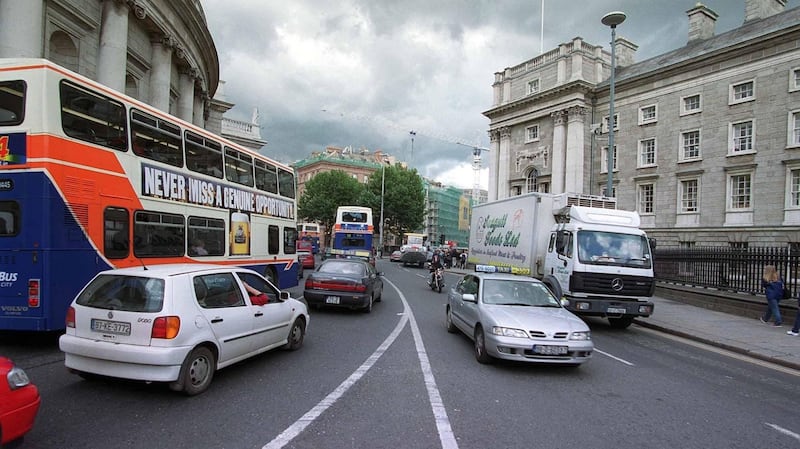Plans to cut speed limits to 30km/h throughout Dublin city and suburbs have been made available for public consultation by Dublin City Council.
The council wants people’s views on its proposed new speed limits bylaws and is also seeking suggestions on additional roads and streets which might be suitable for a 30km/h limit.
Ten years ago the council lowered speed limits in the shopping and central business area of the city from 50km/h to 30km/h.

From 2011 the zone was extended as far as Bolton Street on the north side to St Stephen’s Green on the south side, and from Church Street in the west to Gardiner Street and Dawson Street to the east.
Parts of the Ballsbridge and Ringsend areas and Marino were also covered by the 30km/h restriction.
Following an 18-month review of traffic conditions throughout the city and suburbs, and following submissions from city councillors and the public, the council plans a radical expansion of the speed limit to almost all roads and streets as far as its boundary with the four other Dublin local authorities, excluding “arterial” roads.
The lower limit will be imposed in phases from the end of this year. Under the first phases the limit will be extended west of the current city centre 30km/h zone to cover most of the streets between the Royal and Grand canals.
The next phase, scheduled for introduction in 2017, will cover suburbs such as Sandymount, Crumlin and Drimnagh, Raheny, and parts of Cabra, Phibsborough, Coolock, Glasnevin and Drumcondra.
Remaining suburbs
Under the final phase, the implementation date of which has yet to be determined, the limit will be extended to the remaining suburbs to the city council boarder.
An 80km/h speed will be permitted on just three roads – the Chapelizod bypass as far as the junction with Con Colbert Road; parts of the Santry bypass; and the Dublin Port Tunnel.
A 60km/h limit will be set on a number of other main roads, including the Stillorgan dual-carriageway, the Finglas bypass, the Malahide Road, Howth Road, Naas Road and Long Mile Road.
Periodic 30km/h limits will apply on some of these larger roads during school-run times.
Speaking at an event to publicise the proposed limits, Roseanne Brennan, whose six-year-old Jake died after being hit by a car in Kilkenny two years ago, urged people to support the bylaws.
“It adds a little time to your journey, but trust me, that’s a lot better than a life sentence of knowing you took an innocent life. Whether you’re a driver or not, just witnessing someone getting knocked down and lose their life is enough to change your life forever, believe me, I know firsthand.
“It’s been proven time and time again that less speed, means fewer injuries. A massive thank you to Dublin City Council for what they are trying to achieve.”
Chairman of the council’s transport committee Ciarán Cuffe said the lower limits would save lives.
“Speed is a major contributory factor to road deaths in the Republic of Ireland, 21 per cent of all road deaths every year are caused by excessive speed with 54 per cent of those fatalities being pedestrians.”
Submissions on the bylaws can be made until August 24th at dublincity.ie/speedreview.










